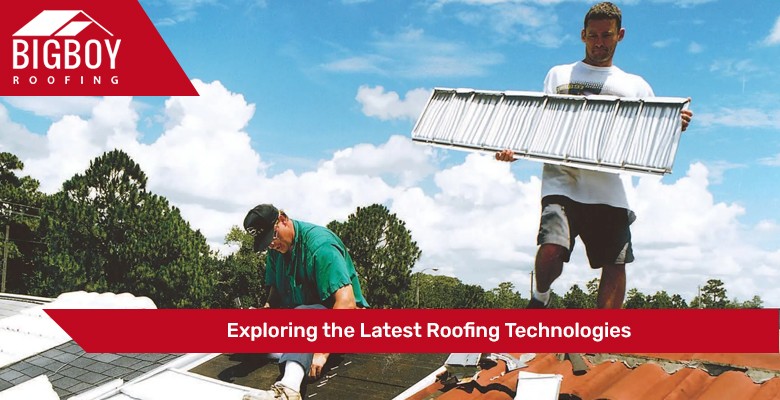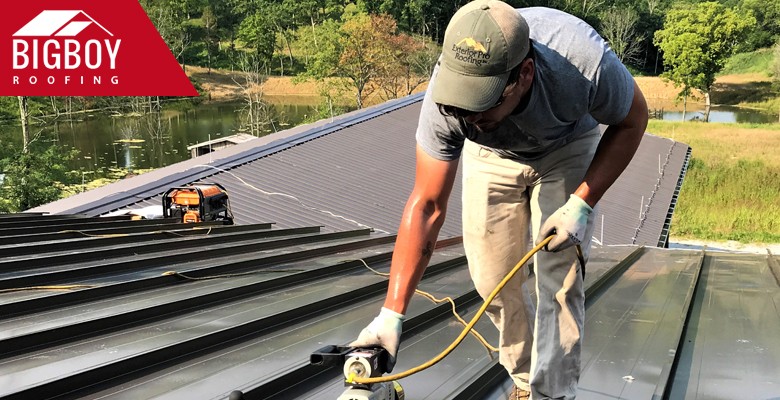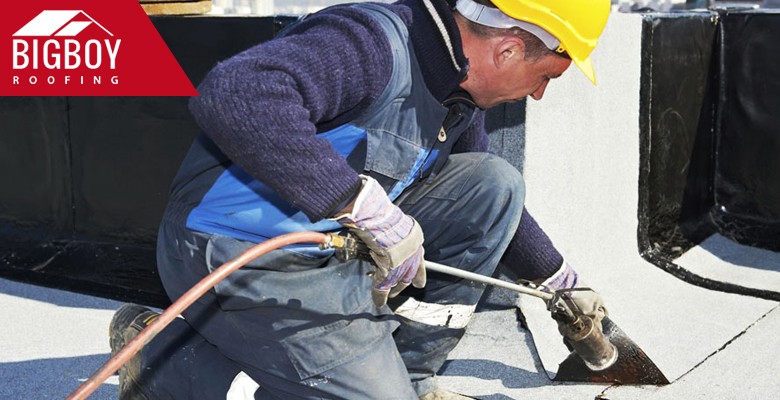Exploring the Latest Roofing Technologies: What’s Shaping the Industry in 2024?
The roofing industry is undergoing a significant transformation, driven by advancements in technology, sustainability concerns, and a growing demand for energy-efficient and resilient solutions. As we move through 2024, new roofing technologies are not only enhancing the durability and performance of roofs but also contributing to smarter, greener homes. Homeowners, architects, and builders are increasingly looking for roofing materials and systems that offer more than just protection from the elements. They are seeking innovations that integrate with modern living, reduce environmental impact, and provide long-term value.
The latest roofing technologies are reshaping the industry by introducing materials that are lighter, stronger, and more adaptable to varying climate conditions. These innovations are also addressing the need for energy efficiency, incorporating solar capabilities, and enhancing overall home sustainability. The integration of smart technologies into roofing systems is another trend that’s gaining momentum, offering homeowners greater control and insight into their roof’s performance. Here’s a look at some of the cutting-edge roofing technologies that are shaping the industry in 2024 and setting the stage for the future of roofing.

1. Solar Roofing Systems
Solar roofing systems are at the forefront of the roofing industry’s transformation. These systems seamlessly integrate solar panels into the roof, offering an energy-efficient solution that doesn’t compromise on aesthetics.
Integrated Solar Panels
Unlike traditional solar panels that are mounted on top of the roof, integrated solar panels are built into the roofing material itself. This innovation creates a sleek, uniform appearance while harnessing the sun’s energy to power the home. Companies are developing solar shingles that mimic the look of traditional roofing materials, allowing homeowners to generate renewable energy without sacrificing curb appeal.
Energy Efficiency and Savings
Solar roofing systems contribute significantly to a home’s energy efficiency by reducing reliance on grid electricity. Over time, the energy savings can be substantial, making solar roofing an attractive investment. Additionally, advancements in solar technology have made these systems more efficient and affordable than ever before.
Durability and Performance
Modern solar roofing systems are designed to withstand harsh weather conditions, including hail, high winds, and extreme temperatures. This durability ensures that the roof performs well over time, providing both energy and protection.
2. Cool Roofing Technology
Cool roofing technology is another major development in the industry, designed to reflect more sunlight and absorb less heat than standard roofs. This innovation helps keep buildings cooler, reducing the need for air conditioning and lowering energy costs.
Reflective Coatings
Cool roofs are typically coated with reflective materials that reflect a significant portion of solar energy. These coatings can be applied to various roofing materials, including asphalt, metal, and tiles, enhancing their reflective properties. This technology is especially beneficial in hot climates, where it can dramatically reduce indoor temperatures.
Energy Efficiency
By reducing heat absorption, cool roofing technology helps maintain a more stable indoor temperature, cutting down on cooling costs. The energy efficiency of cool roofs also contributes to reducing the overall carbon footprint of a building.
Environmental Impact
Cool roofing technology can help mitigate the urban heat island effect, where urban areas experience higher temperatures than surrounding rural areas due to human activities. By reflecting more sunlight and reducing heat absorption, cool roofs contribute to cooler urban environments.
3. Green Roofing Systems
Green roofs, also known as living roofs, are growing in popularity as a sustainable roofing option. These systems involve the installation of vegetation and soil on a roof, creating a living, breathing ecosystem that offers numerous environmental and aesthetic benefits.
Benefits of Green Roofs
Green roofs provide excellent insulation, reducing the amount of energy needed to heat or cool a building. They also help manage stormwater runoff, reducing the risk of flooding and improving water quality. Additionally, green roofs contribute to urban biodiversity by providing habitats for birds, insects, and other wildlife.
Types of Green Roofs
There are two main types of green roofs: extensive and intensive. Extensive green roofs have a shallow growing medium and are typically planted with low-maintenance vegetation, such as sedum and grasses. Intensive green roofs, on the other hand, have a deeper growing medium and can support a wider variety of plants, including shrubs and trees. Intensive green roofs require more maintenance but offer greater design flexibility.
Aesthetic and Environmental Appeal
Beyond their practical benefits, green roofs add aesthetic value to a building, transforming rooftops into lush, green spaces. They also play a crucial role in combating climate change by absorbing carbon dioxide and releasing oxygen.

4. Advanced Roofing Materials
The development of advanced roofing materials is pushing the boundaries of what roofs can achieve in terms of durability, energy efficiency, and design.
Composite Roofing Materials
Composite roofing materials are engineered to offer superior durability and weather resistance. Made from a blend of materials such as fiberglass, asphalt, and recycled plastics, these roofs are lightweight yet strong, capable of withstanding extreme weather conditions. Composite roofing is also highly customizable, available in various styles and colors to match any architectural design.
Metal Roofing Innovations
Metal roofing has long been known for its durability, but recent innovations have made it even more attractive. Modern metal roofs are now available with reflective coatings and insulated panels that improve energy efficiency. Additionally, metal roofs are being designed to mimic the appearance of more traditional materials, such as wood shakes or slate, providing the benefits of metal with a more classic look.
Self-Healing Materials
A significant innovation in roofing materials is the development of self-healing systems. These materials can repair small cracks and damages on their own, extending the roof’s lifespan. Self-healing materials are particularly beneficial in regions prone to harsh weather, as they reduce the need for frequent repairs and maintenance.
5. Smart Roofing Technologies
Smart technology is making its way into roofing systems, offering homeowners enhanced control and monitoring capabilities.
Roof Monitoring Systems
Smart roofing systems can be equipped with sensors that monitor the roof’s condition in real-time. These sensors can detect issues such as leaks, moisture buildup, and structural weaknesses, sending alerts to homeowners before problems become severe. This technology allows for proactive maintenance, potentially preventing costly repairs.
Integration with Smart Home Systems
Modern roofs can be integrated with smart home systems, allowing homeowners to control roof-related functions through a central hub or smartphone app. For example, automated skylights can be programmed to open and close based on weather conditions, or solar roofing systems can be monitored and adjusted remotely.
Environmental Sensors
Smart roofs can also be equipped with environmental sensors that monitor weather conditions, such as temperature, humidity, and wind speed. This data can be used to optimize the performance of the roof and other systems in the home, contributing to greater energy efficiency and comfort.
6. Roofing Underlayment Advancements
Roofing underlayment is a critical component of any roofing system, providing an additional layer of protection beneath the shingles or tiles. Advances in underlayment materials are enhancing the performance and longevity of roofs.
Synthetic Underlayment
Synthetic underlayment materials are gaining popularity due to their superior strength, water resistance, and durability compared to traditional felt underlayment. Made from polyethylene or polypropylene, these materials are lightweight, tear-resistant, and can withstand extreme temperatures. They also offer better traction for roofers during installation, improving safety on the job.
Breathable Underlayment
Breathable underlayment is designed to allow moisture to escape from the roof deck while preventing water from penetrating the surface. This technology helps to reduce the risk of mold and rot, extending the life of the roof. Breathable underlayment is particularly beneficial in climates with high humidity or frequent rain.
Advanced Adhesive Systems
Innovations in adhesive technology are improving the installation and performance of roofing underlayment. Self-adhesive underlayment products simplify the installation process and provide a more secure bond to the roof deck, reducing the risk of wind uplift and water infiltration.
7. Recyclable and Sustainable Roofing Materials
Sustainability is becoming a key consideration in roofing, leading to the development of recyclable and eco-friendly materials.
Recycled Content Roofing
Many modern roofing materials are now made with recycled content, reducing the environmental impact of manufacturing and disposal. For example, asphalt shingles can be made from recycled rubber, plastic, and even old shingles, diverting waste from landfills. These materials maintain the durability and performance of traditional roofing products while contributing to sustainability efforts.
Biodegradable Roofing Materials
Some companies are exploring the use of biodegradable materials for roofing. These products break down naturally at the end of their life cycle, minimizing environmental impact. Biodegradable roofing materials are still in the early stages of development but hold promise for the future of sustainable construction.
Energy-Efficient Roofing Materials
In addition to being recyclable, many new roofing materials are designed to enhance energy efficiency. Reflective coatings, insulated panels, and cool roof technologies all contribute to reducing energy consumption and lowering greenhouse gas emissions.
8. Modular Roofing Systems
Modular roofing systems are revolutionizing the construction process, offering a faster, more efficient way to install roofs.
Prefabricated Roof Panels
Modular roofing involves the use of prefabricated roof panels that are manufactured off-site and then assembled on-site. These panels can include everything from insulation and waterproofing layers to solar panels and integrated gutters. The prefabrication process ensures high quality and precision, reducing the likelihood of errors during installation.
Speed and Efficiency
Modular roofing systems significantly speed up the construction process, allowing roofs to be installed in a matter of days rather than weeks. This efficiency reduces labor costs and minimizes disruption to homeowners.
Customization and Flexibility
Despite the off-site manufacturing process, modular roofing systems offer a high degree of customization. Panels can be tailored to fit the specific dimensions and design of a home, ensuring a perfect fit and seamless integration with the overall architecture.

9. Resilient Roofing Systems
Resilient roofing systems are designed to withstand extreme weather conditions and natural disasters, providing long-lasting protection for homes in vulnerable areas.
Impact-Resistant Roofing
Impact-resistant roofing materials are engineered to resist damage from hail, debris, and other impacts. These materials are often tested to meet stringent standards, ensuring they can protect homes in regions prone to severe weather.
Wind-Resistant Roofing
High wind speeds can cause significant damage to roofs, but wind-resistant roofing materials are designed to stay in place even during storms. These materials are typically secured with advanced fastening systems and reinforced edges to prevent wind uplift.
Fire-Resistant Roofing
In areas prone to wildfires, fire-resistant roofing materials are essential for protecting homes. These materials are made from non-combustible substances, such as metal, tile, or treated wood, and can withstand high temperatures without igniting.
10. Transparent Roofing Solutions
Transparent roofing is an emerging trend that combines functionality with aesthetics, allowing natural light to flood into spaces while providing protection from the elements.
Transparent Solar Panels
Transparent solar panels offer the benefits of traditional solar panels while allowing light to pass through. These panels can be used in skylights, awnings, and even entire roof sections, creating bright, energy-efficient spaces. Transparent solar panels are ideal for homeowners who want to maximize natural light while generating renewable energy.
Polycarbonate Roofing
Polycarbonate roofing is a lightweight, durable, and transparent material that provides UV protection and insulation. It’s commonly used in greenhouses, conservatories, and modern residential designs that emphasize natural light. Polycarbonate panels are impact-resistant and can be treated with coatings to enhance their thermal performance.
Glass Roofing
Glass roofing systems offer unparalleled transparency and a sleek, modern look. These systems are often used in luxury homes and commercial buildings to create open, light-filled spaces. Glass roofs can be combined with smart glass technology, allowing for the control of light and heat transmission.
The roofing industry is at the cusp of a technological revolution, with innovations that promise to enhance durability, energy efficiency, and sustainability. From solar and cool roofs to smart and modular systems, the latest technologies are reshaping how we think about and use our roofs. As these advancements continue to evolve, they will undoubtedly play a critical role in the future of residential and commercial construction, offering more resilient, efficient, and environmentally friendly roofing solutions for the years to come.
FAQs
What is the difference between integrated solar panels and traditional solar panels?
Integrated solar panels are built directly into the roofing material, providing a seamless look, while traditional solar panels are mounted on top of the roof. Integrated panels offer better aesthetics and can be more resistant to weather conditions.
How do green roofs benefit the environment?
Green roofs provide excellent insulation, reduce stormwater runoff, and improve urban biodiversity by creating habitats for wildlife. They also help reduce the urban heat island effect and contribute to cleaner air.
What are the advantages of modular roofing systems?
Modular roofing systems speed up the construction process, reduce labor costs, and ensure high quality due to off-site manufacturing. They also offer customization options to match the specific design and dimensions of a home.
How do smart roofing technologies enhance roof performance?
Smart roofing technologies use sensors and automation to monitor the roof’s condition, detect issues early, and optimize performance. These systems can be integrated with smart home technologies for enhanced control and convenience.

